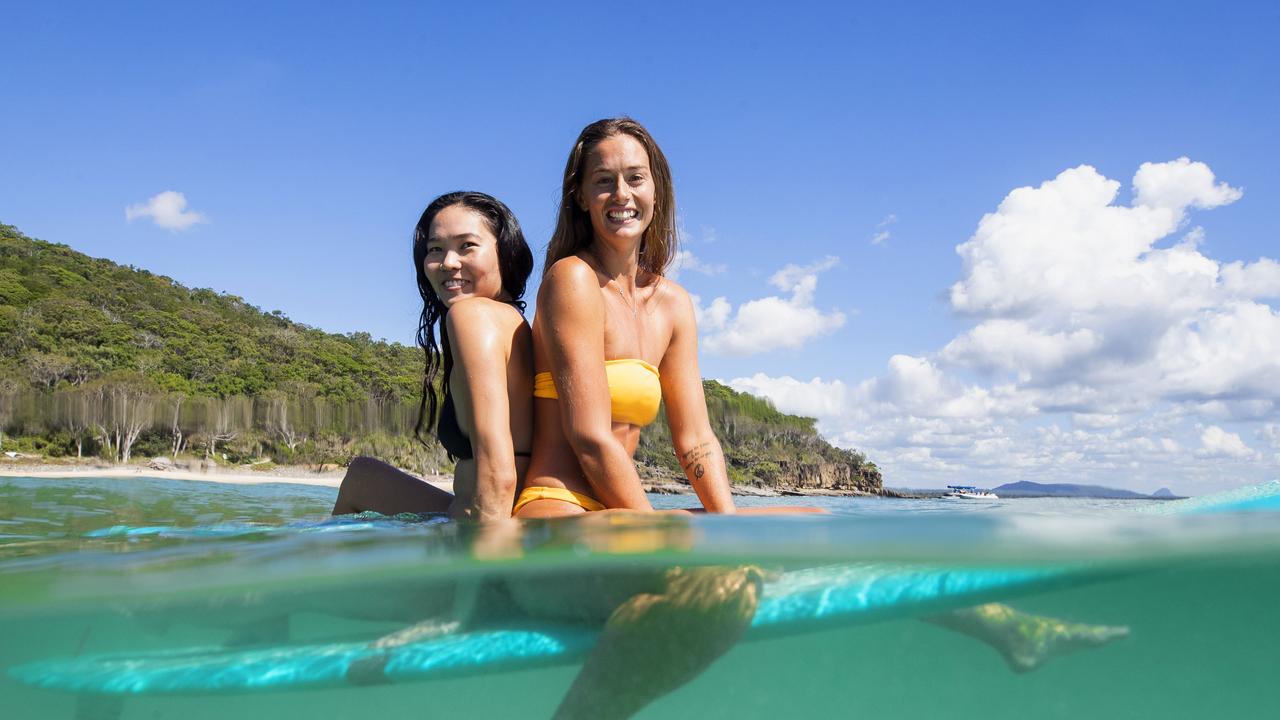Rising number of Queenslanders taking vitamin D supplements
Queensland is facing an unexpected health crisis as confusion grows over healthy levels of exposure to the sun.
Queensland is facing a new unexpected health crisis with a rising number of Queenslanders forced to take vitamin D supplements because they are not getting enough exposure to the sun despite living in the Sunshine State.
Doctors say the rise in the number of people without enough vitamin D can be linked to more people being “fearful of the sun”, avoiding its rays at all costs, and covering head to toe to avoid skin cancer.
They say Queenslanders have also been working longer hours indoors in airconditioning – from early morning to late at night – to escape the heat and never feel the sun on their skin.

Low vitamin D is linked to infertility, brittle bones, low immunity and lack of sleep.
It is especially dangerous for pregnant women and their unborn babies with increased chance of miscarriage, diabetes, and autism. There have also been reported cases of rickets in children because of a lack of crucial vitamin D.
And while the number of people missing out on the vital vitamin is rising, Associate Professor Gino Pecoraro says the problem could be worse, with more people vitamin D deficient than current data indicates.
“It does seem bizarre that in a place where sunshine abounds we could have this kind of problem. Obstetricians are always on the lookout for women’s vitamin D levels in pregnancy as a deficiency could lead to serious problems like pre-eclampsia, which may end in a premature birth. I am seeing an increased number of women lacking in the vitamin and it is important to monitor as the vitamin has been linked to autism, diabetes and depression,” Mr Pecoraro, a Brisbane obstetrician said.
Skin cancer risk versus vitamin D intake is a source of confusion for many Queenslanders according to Queensland chair of the Royal College of General Practitioners Bruce Willett who said some people were terrified to go out in the sun.
“People working from early morning until sunset and sitting at home on weekends are not going to get enough vitamin D,’’ Dr Willett said.
“Old people in retirement homes who are rarely outside usually need supplements and the vitamin is a requirement in pregnancy as it is common for an expectant woman to have low levels. I see more patients that are very fair in complexion coming into the surgery who keep themselves covered and out of the sun. Many of these people don’t realise that they should be taking a vitamin D supplement.’’
But the message from sun safety advocates is clear.
“Any longer than a few minutes in intense UV won’t increase your vitamin D levels significantly, but you will increase your skin cancer risk,’ Cancer Council Queensland chief executive Chris McMillan said.
“The sun’s UV is both the main cause of skin cancer and also the best source of vitamin D, so we need to balance the risk of skin cancer with vitamin D. For most people, adequate vitamin D levels are reached through regular incidental exposure to the sun … chances are, the average Australian will be getting enough vitamin D through everyday tasks, like walking to the car or shop. If you are concerned about your vitamin D levels, you should speak to your doctor first before making any changes to your sun protection habits.”
The most accurate way to measure vitamin D in the body is the 25-hydroxy vitamin D blood test. A level of 20 nanograms/millilitre to 50 ng/mL is considered adequate. Less than 12 ng/mL indicates a deficiency.
Professor of paediatric bone conditions Craig Munns found rickets was an emerging problem in Australia in a study published in 2012. He said a public health campaign was necessary to educate at-risk Australians on the importance of vitamin D.
Vitamin D and skin cancer expert Associate Professor Rachel Neale from QIMR Berghofer Medical Research Institute said “any vitamin D problem in Queensland is minor compared to the skin cancer problem.
“We are the skin cancer capital and that can’t be swept to the side,” she said.
She said there was evidence that it is possible to take in vitamin D through sunscreen.
“When I go out in the sun I will wear sunscreen but will let the sun on my legs or a part of my body for a few minutes each day before applying the sunblock there,” she said.
Brisbane fertility expert Dr David Molloy said vitamin D is tested in women who are starting fertility treatments.
“There is some evidence that a lack of the vitamin can make pregnancy more difficult or could lead to early pregnancy loss. A deficiency can mean a less healthy body overall,” he said.
A QIMR Berghofer study revealed that there was a sharp rise in vitamin D testing between 2000 and 2011 from 0.4 per cent to 36.5 tests per 1000 of the population.
The resulting cost to Medicare increased from $1.1m in 2000 to $95.6m in 2010. It then peaked at a cost of $151m in 2012–13.
The Commonwealth stepped in and encouraged doctors to cut back on the costly tests and there was a reduction but last year showed a significant return of the testing with the cost to the Commonweatlh Government hitting $104m.
Kristy Lord, mum to Ruby, 9, said while her daughter loved playing outside, sun safety was always a priority.
“Ruby loves playing out in the sun and vitamin D is incredibly important for growth and development,” she said.
“We are also very conscious of her being sun safe while having fun in the sun on holidays.”




